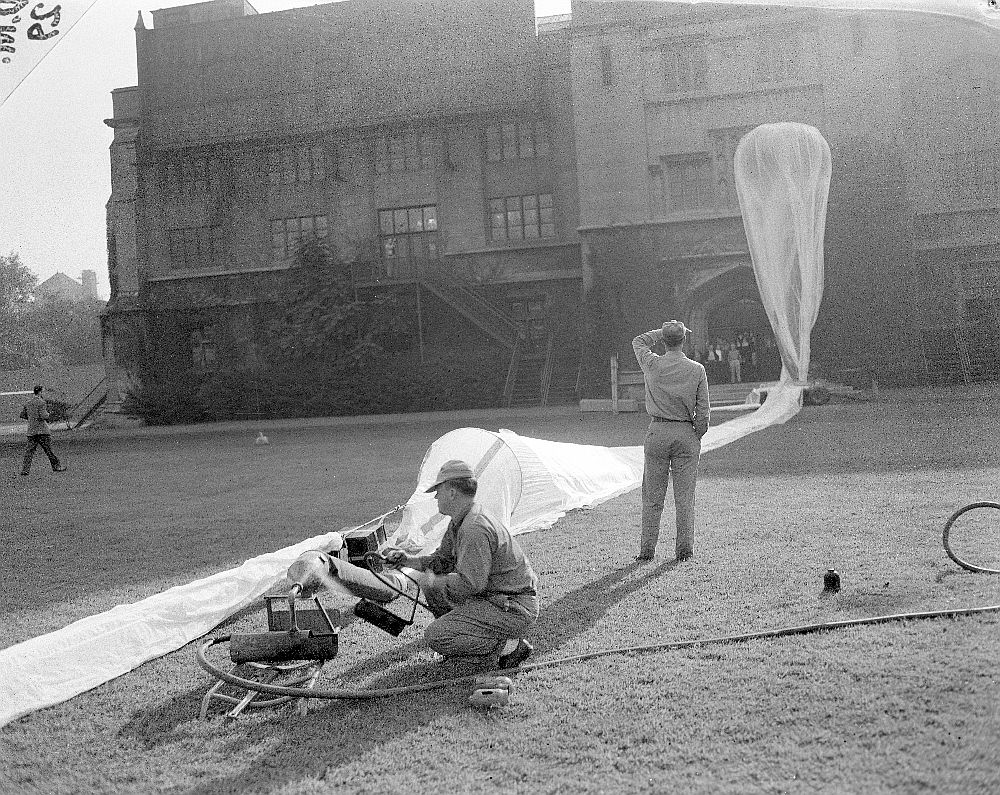Purpose of the flight and payload description
The experiment has been performed in order to study the production of mesons in the interactions of cosmic-ray particles with hydrogen nuclei. The proton target consisted of a spherical metal Dewar, 30 cm in diameter, filled with hydrogen. Four crossed counter trays determined the direction of the incoming particle while two other counter trays detected multiple events. A master pulse was triggered by the coincidence. The pulses from each counter were in coincidence with the master pulse and were registered individually on a moving photographic film (hodoscope). Towards the middle of the flight the hydrogen was ejected from the Dewar. The remaining time at altitude was used as a control experiment without hydrogen.
Details of the balloon flight
Balloon launched on: 9/6/1950
Launch site: Stagg Field, University of Chicago, Illinois, US
Balloon launched by: Chicago University Group
Balloon manufacturer/size/composition: Zero Pressure Balloon
End of flight (L for landing time, W for last contact, otherwise termination time): 9/6/1950
Balloon flight duration (F: time at float only, otherwise total flight time in d:days / h:hours or m:minutes - ): F 4 h 30 m
External references
- Multiple Events Produced in Hydrogen by Very High Energy Cosmic-Ray Particles at an Altitude of 90,000 Feet Phys. Rev. 84, 593 - Published 1 November 1951
10434If you consider this website interesting or useful, you can help me to keep it up and running with a small donation to cover the operational costs. Just the equivalent of the price of a cup of coffee helps a lot.


